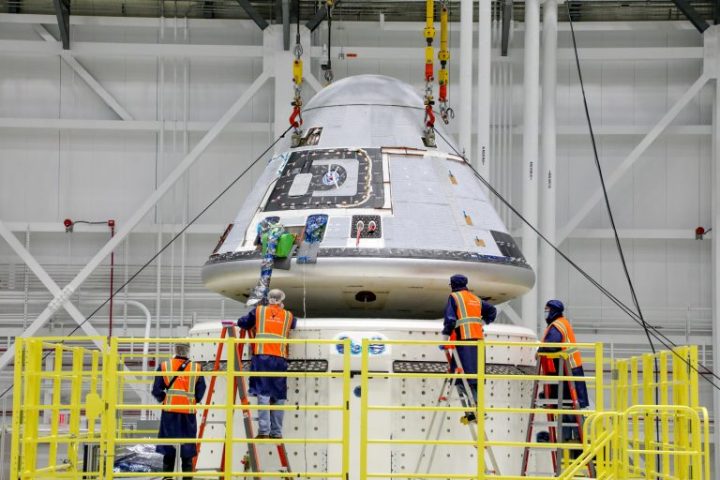
The second orbital test flight of the Boeing Starliner has been delayed again. The Starliner is designed to ferry astronauts between the Earth and the International Space Station (ISS) and will perform its uncrewed test flight next month.
The Starliner test flight was already delayed last month. Originally scheduled for this month, the test flight is now planned for April.
NASA says this delay is due to both the recent winter storms in Houston and the need to replace avionics boxes, causing a delay of two weeks. There is also a need to coordinate with the schedule of the ISS, as there is be both a Soyuz launch and a Crew Dragon mission scheduled for the station in April.
“Boeing and NASA have worked extremely hard to support an early-April launch but we need to assess alternatives to ensure NASA’s safety work can be accomplished. NASA and Boeing know we fly together,” said Kathy Lueders, associate administrator, NASA’s Human Exploration and Operations Mission Directorate in a statement. “Boeing has done an incredible amount of work on Starliner to be ready for flight and we’ll provide an update soon on when we expect to launch the OFT-2 mission.”
The Starliner has suffered from problems during its development, like its first orbital test flight in December 2019 when the craft failed to reach the ISS as planned. In addition, later testing showed a software issue that could have lead to the loss of the craft. Boeing and NASA have been working to fix these issues and get the Starliner ready for its next test, but the process has been a long one.
“I’m grateful for the extraordinary work being undertaken by our NASA partners as we progress towards our OFT-2 mission,” said John Vollmer, vice president and program manager of Boeing’s Commercial Crew Program. “And I’m very proud of the Boeing Starliner team for working so diligently to get the hardware, software, and certification closure products ready for flight. We’re committed to demonstrating the safety and quality of our spacecraft and progressing to our crewed test flight and the missions beyond.”



